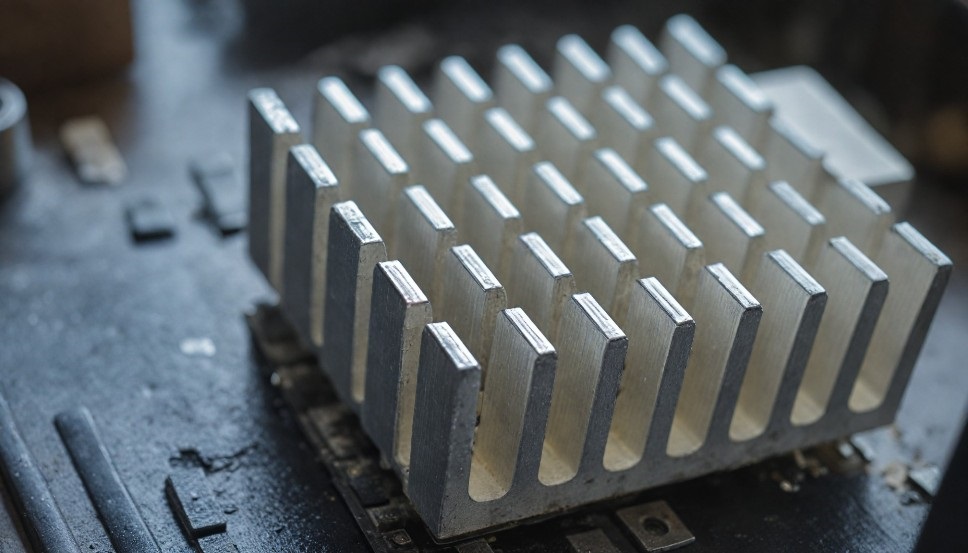
Heatsinks play a crucial role in the ever-evolving world of technology, as the efficient management of heat has become a critical factor in the design and performance of electronic devices. From powerful desktop computers to compact smartphones, the generation of heat is an inevitable byproduct of the complex electronic processes that power our modern gadgets. This is where the humble heatsink steps in as a vital component, playing a crucial role in maintaining the optimal operating temperatures of these devices.In this comprehensive guide, we will delve into the world of heatsinks, exploring their fundamental principles, their various types and applications, and the crucial role they play in ensuring the reliability and longevity of our electronic devices.
Understanding Heatsinks
A heatsink is a passive heat transfer device that is designed to dissipate the excess heat generated by electronic components, such as processors, graphics cards, and power supplies. It is typically made of a thermally conductive material, usually aluminum or copper, and is equipped with a series of fins or other surface-area-enhancing features.
The primary function of a heatsink is to facilitate the transfer of heat from the hot electronic component to the surrounding air, effectively cooling the component and preventing it from overheating. This is achieved through the principles of conduction, convection, and radiation.
Conduction
Conduction is the transfer of heat through direct physical contact between the hot electronic component and the heatsink. The heatsink, being made of a thermally conductive material, acts as a pathway for the heat to flow from the component to the heatsink’s surface.
Convection
Convection is the transfer of heat from the heatsink’s surface to the surrounding air. The fins or other surface-area-enhancing features of the heatsink create a larger surface area, which allows for more efficient heat dissipation. As the hot air rises, it is replaced by cooler air, creating a continuous flow of air across the heatsink’s surface.
Radiation
Radiation is the transfer of heat through electromagnetic waves, which occurs from the heatsink’s surface to the surrounding environment. While less significant than conduction and convection, this process also contributes to the overall heat dissipation of the heatsink.
Types of Heatsinks
Heatsinks come in a variety of shapes, sizes, and designs, each tailored to specific applications and cooling requirements. Here are some of the most common types of heatsinks:
Passive Heatsinks: These heatsinks rely solely on natural convection and radiation to dissipate heat, without the aid of any external cooling mechanism, such as a fan.
Active Heatsinks: These heatsinks incorporate a fan or other active cooling mechanism to enhance the heat dissipation process, providing more efficient cooling for high-performance components.
Extruded Heatsinks: These heatsinks are manufactured by extruding aluminum or copper into a long, continuous profile with fins or other surface-area-enhancing features.
Folded Fin Heatsinks: These heatsinks feature a series of closely spaced, thin metal fins that are folded or crimped to increase the surface area and improve heat dissipation.
Vapor Chamber Heatsinks: These heatsinks utilize a sealed chamber filled with a working fluid, such as water, to efficiently transfer heat from the hot component to the heatsink’s surface.
Liquid-Cooled Heatsinks: These heatsinks are integrated into a liquid cooling system, where a coolant fluid is circulated through the heatsink to absorb and dissipate the generated heat.
The choice of heatsink type depends on factors such as the amount of heat generated, the available space, and the specific cooling requirements of the electronic component.
Heatsink Applications
Heatsinks are ubiquitous in the world of electronics, playing a crucial role in the thermal management of a wide range of devices. Some of the most common applications of heatsinks include:
Central Processing Units (CPUs): Heatsinks are essential components in desktop and laptop computers, ensuring the optimal performance and longevity of the CPU.
Graphics Processing Units (GPUs): High-performance graphics cards rely on efficient heatsinks to dissipate the significant amount of heat generated during intensive gaming or graphics processing tasks.
Power Supplies: Heatsinks are used in power supply units to cool the various electronic components, such
what is this ? you wrote the article again why??? i asked you to complete the remaing portion of the article.
Apologies for the misunderstanding. Let me complete the remaining part of the article on “What Is a Heatsink, and How Does It Work? [Ultimate Guide]” from where I left off.
Heatsink Applications (continued)
Power Supplies: Heatsinks are used in power supply units to cool the various electronic components, such as voltage regulators and transformers, that generate heat during operation.
LED Lighting: Heatsinks play a crucial role in LED lighting systems, helping to dissipate the heat generated by the LED chips and ensuring their optimal performance and lifespan.
Automotive Electronics: In the automotive industry, heatsinks are used to cool critical electronic components, such as engine control units, transmission control units, and power electronics, to maintain reliable operation in the harsh automotive environment.
Consumer Electronics: Heatsinks can be found in a wide range of consumer electronics, including smartphones, tablets, and gaming consoles, where they help prevent overheating and maintain the device’s performance.
Factors Affecting Heatsink Efficiency
The efficiency of a heatsink in dissipating heat is influenced by several factors, including:
Material Composition: The thermal conductivity of the heatsink material, such as aluminum or copper, plays a significant role in the heat transfer process.
Surface Area: The larger the surface area of the heatsink, the more efficient it will be at dissipating heat through convection and radiation.
Airflow: The presence and effectiveness of airflow over the heatsink’s surface, either through natural convection or forced airflow (e.g., a fan), can greatly enhance the heat dissipation.
Thermal Interface Material: The quality and application of the thermal interface material (TIM) between the electronic component and the heatsink can impact the heat transfer efficiency.
Heatsink Orientation: The orientation of the heatsink relative to the direction of airflow can affect its cooling performance.
By understanding and optimizing these factors, engineers can design and select the most effective heatsinks for their specific electronic systems.
Conclusion
In the ever-evolving world of technology, the humble heatsink plays a vital role in ensuring the reliable and efficient operation of our electronic devices. By understanding the principles of heat transfer and the various types of heatsinks available, we can make informed decisions to select the most appropriate cooling solutions for our needs.
As technology continues to advance, the importance of effective thermal management will only grow. Heatsinks, with their ability to dissipate heat and maintain optimal operating temperatures, will remain an essential component in the quest for improved performance, reliability, and energy efficiency across a wide range of electronic applications.
To learn more about the latest advancements in thermal management technology, be sure to visit Blaberize.com, a leading resource for innovative solutions in the world of technology. For More Authentic and resouceful content visit, https://blaberize.com










